Stream Erosion, Transport, & Gold Deposits
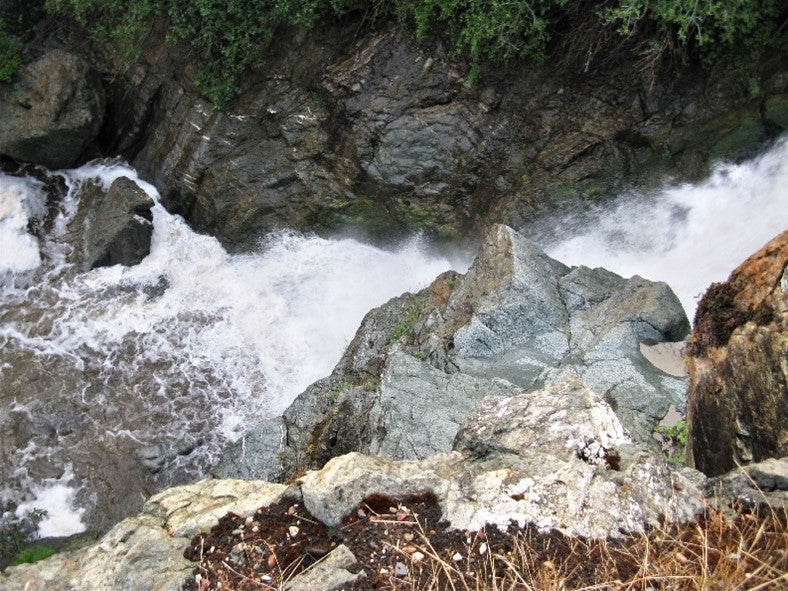
Stream Erosion, Transport, & Gold Deposits

By Jess Wilkinson
aka Prospector Jess
Springtime is arguably one of the most exciting times to be a gold prospector. For most of the country, Mother Nature spent the last 5-6 months refreshing our hunting grounds with harsh winter weather systems and it’s just about time to go dig into all that “new material” she’s left for us.n preparation for that, let’s talk about stream erosion, transport, and deposits. That’s not deposits in the bank — YET, anyway. I’m referring to the gold that gets deposited in or on the stream’s bedrock.
Erosion: The cutting of rock and mineral material by flood-driven mass flows. Starting with erosion, everything else pales in comparison. For now, I want to focus on the idea of streambed erosion and its impact on stream shapes and gold deposits. Why, you ask? Well, for one, erosion is a big part of what moves the streambed, and any gold in it, around; and two, erosion is what eats away at river/stream banks and gets you down to bedrock. PJ’s rule says these three things: gold goes downhill, downstream, and down to bedrock.
Stream Bedload: The material that is being transported by the actions of water and moving debris flowing downstream.
Let’s look at the three types of stream erosion:
- One is abrasion, or the sandpaper grinding effect that takes place with the material that’s in the bedload.
- Two is mechanical erosion by impact — also known as quarrying and plucking. This is when larger pieces of moving rock impact the static bedrock and fracture or lift broken pieces into the stream flow.
- Three is the chemical erosion by dissolving salts. It’s often underestimated how much eroded mineral mass that flows downstream is actually dissolved by ionic solutions of salts. Over time, the dissolved salts eat away at the whole rock, weakening its structure and making it vulnerable to erosion.

Another thing I’ve talked about at great length in the past is a mass movement and deposition process called saltation. Saltation, not to be confused with dissolved salts, is an action. It is the action of the material being scattered or bounced downstream and this is key when considering how gold gets deposited into any given three-dimensional space.
In order to find gold, strategically speaking, you need to identify a few things about it, like where it came from, where it was headed, and how it got deposited in its current resting place. Overall, the concept here is movement.
Only the most massive storms and related flood flows of stream material involving these three erosional features are going to make significant amounts of gold move. You can make small amounts of gold move with almost any flow. You can make gold move by just swirling your hand in a pond of water that has ultra-fine gold particles suspended in it. That’s not the thing we want to go for. We’re going for the big nuggets, the chunkies, the EUREKA moment!
Keeping the three types of erosion in mind, plus saltation (bouncing), the moving streambed load is driving and altering material in a dramatic way. Whether it’s breaking up the bedrock itself, or it’s breaking things up that are trapped in or below the flow that are compacted and covered with clays and other mineralization, it behaves like a giant cement mixer, scrubbing, crushing, and dissolving the streambed and the bedrock below it.
Mechanical Erosion by Abrasion
The moving material grinds the edges of material around it when they come in contact (abrasion). Each rock, pebble, or sand particle cuts a bit off the neighboring surfaces as they scrape against each other. This cutting action rounds out sharp edges and smooths surfaces like sandpaper. It also rounds and smooths the surface of any gold nuggets contained in the flow.

When we get a heavy flood flow in the stream, there’s still stationary material stuck on the bottom that the moving mass of debris above it interacts with. That moving material is referred to as the “moving bed load.” And in most cases, below the moving bed load are stationary overburden layers from prior floods. This forms two physical layers that interact.
In this flow are huge amounts of suspended particles, including ones of very large size, all moving with the force of gravity downstream. Now as they move, the particles gradually chew into the stationary material down below them. As these abrasive objects chew into the stationary layers below, they’re going to cause the stream flow position to crawl its way slowly but surely toward bedrock. Bedrock is solid enough that it doesn’t just get eroded by the stream flow. Once the erosion of prior streambed deposits hits bedrock, erosion slows way down. Now, that doesn’t mean abrasion can’t still happen. In fact, bedrock still does erode, just at a much slower speed. That’s one reason river cut canyons tend to take this “V”-shaped notch.


Because there are variations in typical stream rock structures, variations in their softness, or hardness, you seldom see an actual V-shaped canyon. Instead, you see something that looks kind of weird. The canyon walls will be not so V-shaped as steeply angled to the stream bed. When you see “U”-shaped stuff that’s hanging with real high steep walls and a flat U-shaped bottom, that’s classic glaciation pattern. What we’re talking about are streambeds that have this interesting V-like structure that typically has a point where the stream flows during the summer, a low point.

During major floods, the stream spreads out, and it may spread wide, or it may rise within a narrow passage, and just go deep and swift. It depends on the structure and material of the bedrock. And so, what we’re getting at is, when this material moves, it acts like a doggone sandblaster, or maybe even an industrial grinder. It’s going to just start grinding the material away by abrasive action, and eventually what it’s going to start doing is eating into the bedrock.
It starts notching out whole chunks of this; where there’s a lot of flow, it’s going to notch the rock out. Where it’s hard, it can’t notch, it will just polish it like a rock polisher. And so, what it’s doing is causing the canyon to grow deeper and deeper as time goes on. It also, from time to time, starts shifting the stream’s direction, maybe it’s softer over this direction than it is on the other side. The eventual V pattern that it takes going downstream moves the streambed from point A to point B.
Now, that abrasion effect doesn’t include effects from large impactors. Impactors are when you have Newton’s third law of motion in action: momentum. Momentum (Mass x Velocity) causes the objects to exchange energy on impact and move in different directions — you’re causing an inelastic collision between two rocks, or a rock and sidewall, and BANG! The impact releases energy when it hits, like a cue ball breaking the rack in a game of pool. This is what know as mechanical erosion by impact — or quarrying and plucking.
With enough energy, the impact is going to make the other rock(s) jar and move — even if it’s just moving a little, tiny bit, it’s now in motion… downstream along with the gold it once trapped.
- Mechanical Erosion by Impact — Quarrying / Plucking
Quarrying means to extract or pluck (stone or other materials) from a quarry, or to cut into (rock or ground) to obtain stone and other materials.
So, it starts something like this… “Two rocks meet in a [gravel] bar...” CLACK!

One big rock is composed of hard quartz, and the other one is a smaller rock of hard gneiss. A key point here is they are both hard. And when they collide in the stream, they emit that high-energy clack-clack sound. The moving rock is imparting a bit of energy into the stationary rock, causing it to move. If a cobble or boulder has enough dynamic or kinetic energy it can move, crush or even shatter a giant rock. You see where we’re going with this.
Every time the two rocks collide, or the same moving rock collides with other rocks, it chips off a piece of itself and the stationary rock, and the newly independent pieces now float downstream as silt, sand and gravels. The result of this newly formed rock fragment floating downstream rubbing up against bedrock and sanding down surrounding rocks? Abrasion! So, you see how this cycle continues almost in perpetuity.
As the flow erodes the streambed with erosion mechanisms (abrasion, quarrying and plucking) it’s going to remove more material and have very different properties when it does. One property is that the freed-up material can be very coarse and massive. Second, if the impact releases anything in the way of gold, that gold can be crystalline if it comes from stringers in the bedrock. When the bedrock has a quartz intrusive chunk in there that has gold in it and the impacts snap off a brittle piece of quartz glass, it's going to start releasing gold into the stream flow to deposit downstream in the next lower layers.
It typically won't come out as one big nugget of gold; it will come out as a lot of little gold crystals and quartz fragments containing gold. These fragments will be much less dense than a gold nugget, so they spread downstream faster. And possibly a large chunk or two of any gold embedded in there. Some of the gold-bearing rocks are too weak to survive all this impact thrashing. And so, the gold-bearing rock explodes and leaves particles of crystalline gold, some of which might show up in your pan. Even better, they can also get rounded into nice looking nuggets and pickers further downstream.
- Chemical Erosion by Altering Rocks and Dissolving Salts
There are two parts to chemical erosion by weathering, alteration, and dissolving salts:
- Salts/ionic compounds from altered minerals dissolve into water.
- The salt/ionic water solution alters rocks by removing key elements, weakening their structure and making them vulnerable to the aforementioned types of mechanical erosion.
When we’re referring to salts, it’s the soluble salts similar to table salt or sodium chloride to be specific, but it could be sodium iodide or could be potassium nitrate aka saltpeter.
The way this type of erosion works is that, over time the water will leach the salt from within the rock and transport the salt elsewhere. That leaching action eats into the mineral matrix over time, weakening the whole rock structure and making it ripe for erosion. Even if there’s not a lot of flow by fluid movement, it can readily move by solution ion transport; this stuff will eventually erode and redeposit elsewhere. It may also oxidize to a different soluble compound and then get leached out by water. This is how pyrite can disappear at the water table air interface and leave any gold contained with them behind in a nice pocket placer gold deposit.



Dissolving Salts is an entire chemistry lesson in itself, and we could be here for a while on this particular topic, so for those interested, there is an advanced lesson on this in my (free) online lesson linked below. The takeaway here is that this is yet another form of erosion to keep in mind when identifying your landscapes in search of gold deposits this season.
Transport
Now that we’ve covered the different ways that streambeds get eroded, what next? Material transport. And it’s a bit more in-depth than just “floating downstream.” Mass material transport is sorted into two categories: Mechanical, which we’re going to talk about below; and Chemical, which is covered in more depth in the video link at the end of this article.
Within the category of mechanical transport, there are three different methods, known as Suspension, Saltation, and Rolling & Sliding.
A Suspension, by definition, is a mixture between liquid and particles of a solid and, for our purposes, when the particles do not dissolve in the liquid (water). The reason you want to know about suspension is because the fine gold you’re looking for and the fine suspended particles gold travels with behave similarly in their movement due to their fluid dynamic properties. Suspension means that the material is actually floating in the water as the water flows downstream. And in the case of gold, it has to be extremely flat, so it flies like an airplane in the water. You can imagine how thin that is, but as you well know gold can easily take that shape.
Understanding how the suspension of particles affects mass movement is important because it helps you see the types of silt and sand-laden locations that will concentrate fine to nano-sized gold deposits left by receding floodwaters.
The second type of material transport is called Saltation — not to be confused with the aforementioned chemical erosion modality of Dissolving Salts. Saltation is the process by which rocky debris moves downstream in a heavy or light water flow, depending upon the size of the material. The rock erosion and water flow give rise to the debris movement pattern called “salting” mass transport.
Essentially, saltation is born after the quarrying/plucking effect occurs in the stream with a little bit of released sand grain abrasion, and another bedload movement pattern starts to happen. A piece of streambed material will lift up and merge into the stream flow for a short time, bouncing, and being continuously redistributed as it moves downstream — think bouncy ball bouncing down the stairs. That’s the distinction between suspension and saltation. Suspension happens when the rock particles don’t come back down to the bottom unless they kind of brush up against it like a dust cloud or when stream flow stops. In saltation, the rock chunks are big enough they actually ricochet off the streambed as they bounce downstream.
Saltation is of particular interest to gold prospectors because it is this transport method that automatically classifies and sorts rocks and chunkier gold on the streambeds. Insert “Eureka” moment here!!! It is why you will often see cobbles and gravel separated out nicely. One distinction to note: fine gold that is traveling via suspension can sneak down through that same material if it settles and locks into sheltered pockets.
It is possible to have finer gold below nuggets in places where the bed-depositing process is altered, such as in desert playas with flash floods that spread out so rapidly that they don’t dig deeply before dropping their load of golden nugget treasure. Landslides and soil creep can distort the fine to coarse layers as well.
The third method of mass material transport is Rolling & Sliding, which is pretty self-explanatory. A rounded object will roll down the streambed based on a frictional force of the water flow around it, or possible impacts from objects moving around it. That also means if there is enough force, and the rock can’t roll, it may just slide along the surface of the streambed. This is especially true in sandy or smooth rock areas and is of particular importance because it means that the object is reasonably heavy and pretty large enough not to be lifted by anything but the strongest flood flows.
Deposition
Mechanical deposition is the process by which insoluble rocks and minerals get deposited downstream by dropping out of the stream’s flow as it slows down. When the transportation of the bedload starts to slow and the stream flow also slows and doesn’t have as much drag force on your rocks — whether it’s gold or a boulder — it will slow and eventually drop out of the flow (deposit).
When you’re looking at gravel bars and streambeds, there is a big distinction here and that is the settling of layers that all of these processes produced. Remember, the finer stuff settles last, so it goes from coarse up to fine on top. The finer stuff is the only stuff that will be there unless the layers are overturned by some other major disturbance. If there is sand or silt, it’s only going to be fine gold. If there are coarse gravels and boulders, there might be some fine gold buried down in between those boulders and cobbles. But you’re more likely to find the nuggets down to our bedrock in those conditions, they’re going to seek the lowest point.


Chemical deposition is another process by which the material comes out of a solution and deposits in a rock or mineral assemblage. Typically, in the case of caliche, it would be calcite welding the small particles of sand together and any gold that might be trapped in that area. This process also involves evaporation. The fluid flows through the soil or through the groundwater and at the surface. This is especially true in the desert because of its arid properties and the changes in heat and temperature affect that.
Now that you have a clear picture and understanding on how the flow of material carries gold from its source to its final resting place (deposit), I encourage you to practice looking for these erosional features on your local streams. If those areas aren’t yet accessible to you, use photos from your previous season or even Google Maps images of the last recorded photo to practice. That way, once the snow melts, you’ll know exactly where to start looking.
If you’re in an area that just experienced what the meteorologists refer to as “atmospheric rivers” or heavy rain season, it’s GO TIME! Look closely at the material around the deposits — at the size, the shape, and the sorting/grading — and it will start to tell you a clear story about what is upstream from you, where your gold comes from and where it’s likely sitting waiting to be found! Practicing this workflow will help you more quickly identify where the gold will likely be settled so you can start where X marks the spot!

Until Next Time… Happy Prospecting!
If you want to take a deeper dive into Erosion – Transport – Deposit of gold, I’ve created a video of this lesson that also includes the chemical effects briefly mentioned above. You can find it at https://sourdoughminer.com/streambed-erosion-gold-deposits/
No comments



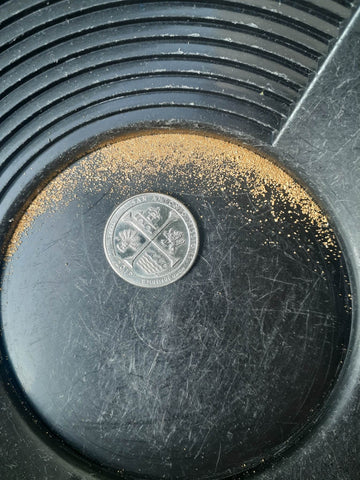
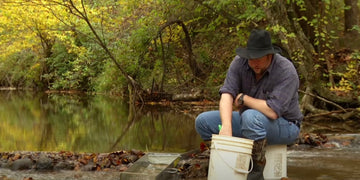
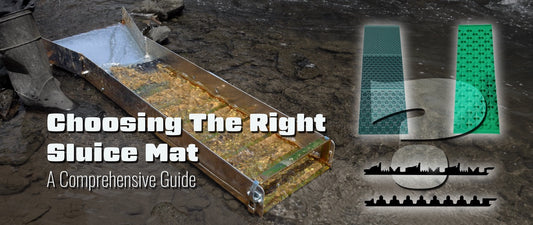
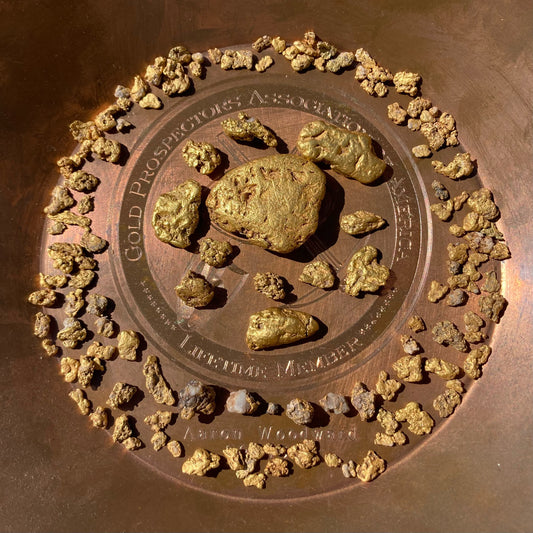
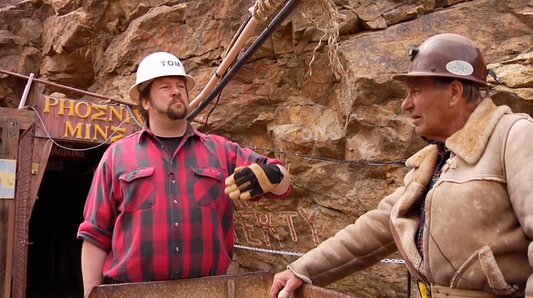
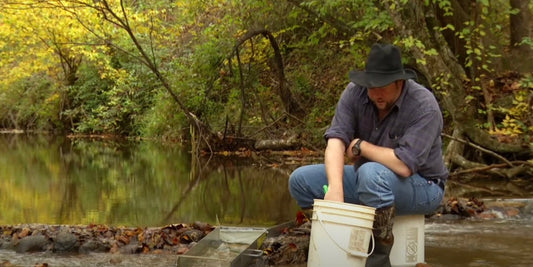

0 comments